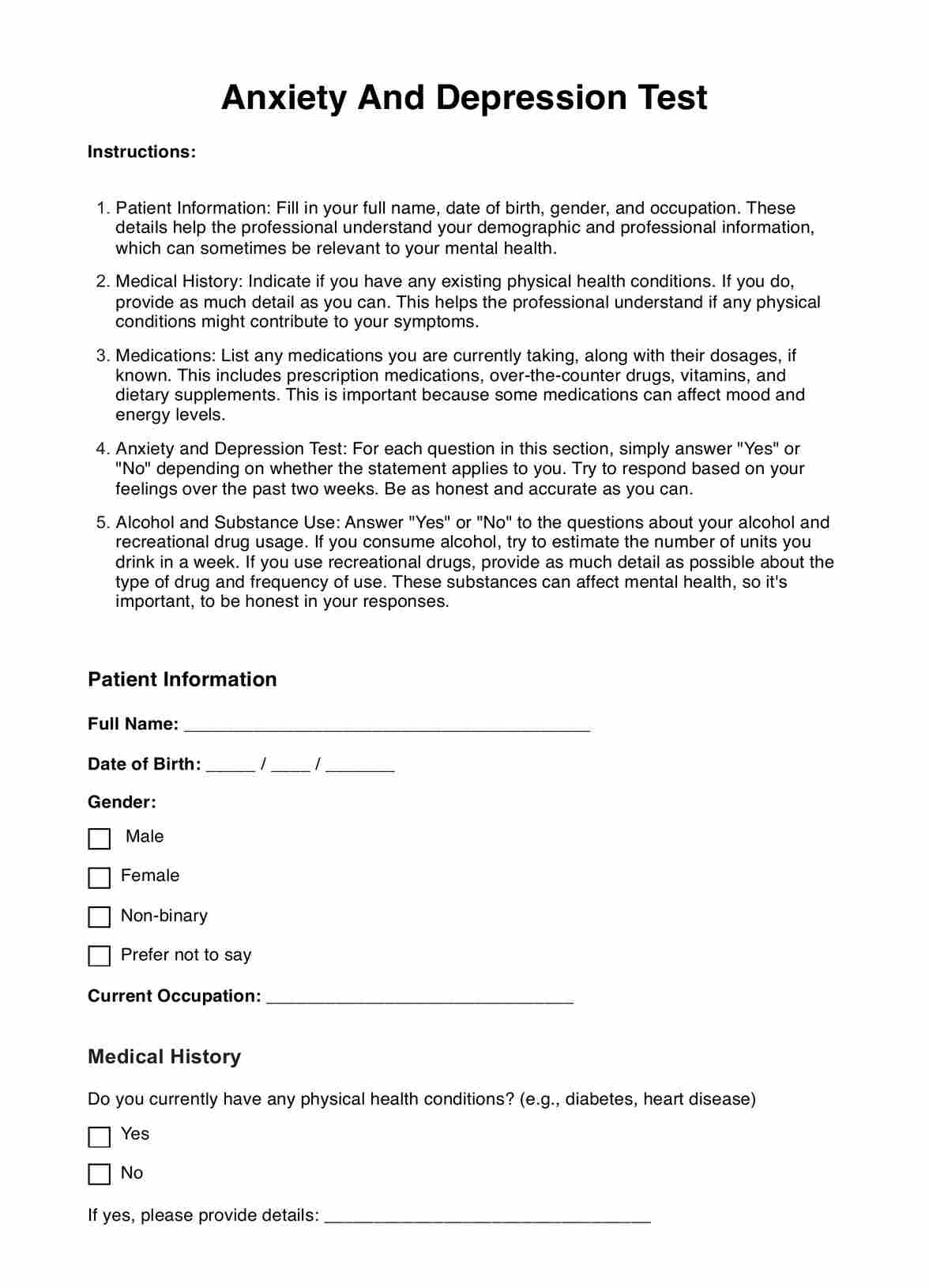Anxiety And Depression Tests are used by mental health professionals such as psychologists, psychiatrists, and general practitioners.

Anxiety And Depression Test
Discover the importance of Anxiety And Depression Tests for accurate diagnosis. Download our free PDF guide to understanding these crucial mental health tools.
Use Template
Anxiety And Depression Test Template
Commonly asked questions
These tests are used as a part of the comprehensive assessment process to diagnose and monitor the progress of anxiety and depression in individuals.
These tests help identify the presence and severity of symptoms related to anxiety and depression, thereby assisting in diagnosis, treatment planning, and monitoring.
EHR and practice management software
Get started for free
*No credit card required
Free
$0/usd
Unlimited clients
Telehealth
1GB of storage
Client portal text
Automated billing and online payments











